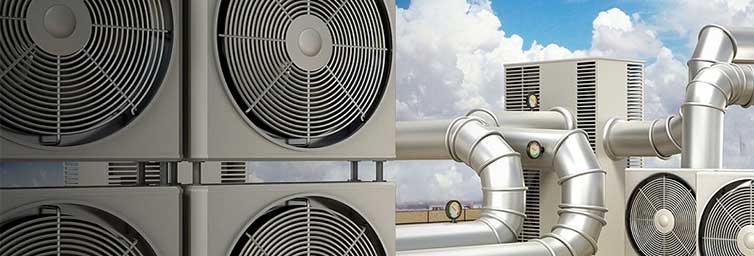Heating, Ventilation and Air Conditioning(HVAC) systems play an important role in buildings and homes. They can effectively be used in industrial areas as well as residential complexes. A good HVAC system provides proper ventilation inside a building and maintains a comfortable temperature. The huge air conditioning apparatus that is generally seen on the terrace of buildings forms a part of HVAC systems.
What is Building ventilation? Why is it so important?
Ventilation is a process that has to be done to maintain adequate indoor environment quality. Ventilation circulates air from the outside into the building while removing contaminants from the air already present inside. This keeps the air quality at a steady pace. There are two types of ventilation, which are:
- Natural Ventilation
- Mechanical Ventilation

Natural Ventilation is a process where the difference in pressure between air inside and outside a building creates an envelope of circulation. This is caused by wind and change in temperature. The air filters itself through the windows and doors of the structure.
Mechanical Ventilation is used in most buildings as it is easier to control the quality of the indoor air environment used Heating, Ventilation and Air Conditioning systems(HVAC). However, it should be done carefully as to not compromise on the overall quality of the indoor environment.
How does an HVAC system work?

By understanding how an HVAC system works, homebuyers can save a lot of time and appreciate the importance of satisfactory indoor air quality. An HVAC system is designed to ensure that the air inside a building is free from pollutants, ensuring good building pressurisation and provides a comfortable atmosphere to its residents.
Each building may have its specifications based on operation, however, most HVAC systems have the same elements of design. They are:
- Air from the outside
- Air Handling Unit(AHU)
- Distribution of air
- Air Exhaust system
Air from the exterior of the structure is pulled into the system by the Air Handling Unit. The AHU filters and pushes it through the coils of the HVAC system that either cools or heats it before sending it inside the building. The air distribution system is made up of pipes and ducts that distribute the air around the interiors. Air that is already inside is passed out once fresh air is let in. A building automation device is used to control the temperature inside the building.
What are the functions of an HVAC system?
HVAC systems can perform the following:
- Control the movement of air.
- Freshen up the indoor environment by ventilating air from the outside.
- Filter the air from harmful contaminants.
- Heat or cool the atmosphere by increasing or decreasing the temperature.
- Change the relative humidity content inside the building.
What are the different kinds of HVAC systems?
There are several different types of HVAC systems which are used based on their application. Understanding different kinds of HVAC systems can save homebuyers a lot of time while buying a new system for the house.
Air conditioning and Heating system:

This is the conventional type of HVAC system. It is generally a split system with two units on the inside and outside of the building. The inside element has a fan or coil with ductwork that carries (cool or warm) air throughout the house or building, while the outer element’s purpose is to cool the refrigerant used in the system. More recently, air conditioning systems have been designed to purify the air, like humidifiers, etc.
Zoned Systems

These HVAC systems allow its user to control the temperature in different parts of the building such as heating one room while cooling another by operating on the valves and dampers which control the airflow into different parts of the house. Zoned systems are cost-effective as they can control the airflow to be at a specific temperature and time.
Duct-free split systems

Duct-free split systems are ideal for houses or buildings that don’t have passageways for airflow. They are a good choice for rooms which cannot be redesigned with channels for air circulation.
Humidity Control

This type of HVAC system can control the humidity inside a home. Most HVAC systems that are made now offer the option to control the humidity. Depending upon the area and its weather conditions, humidifiers or dehumidifiers are used. Overall, it is used to maintain a congenial atmosphere. People living in very dry regions or even the tropics usually prefer this type of system.
It is important to understand the exact purpose of the HVAC system before buying one. Buying a system that is bigger than the space inside the building can lead to too much condensation, rot, etc., which would eventually lead to discomfort. Therefore, it is necessary to choose the right system for the application.
Please check out:
Urban Rainwater Harvesting
Technically Reviewed by Rajesh Pagadala, MS, Founder & CEO - BuildersMart.



















